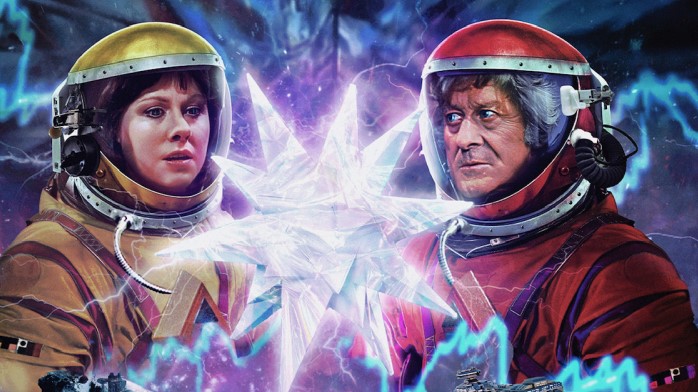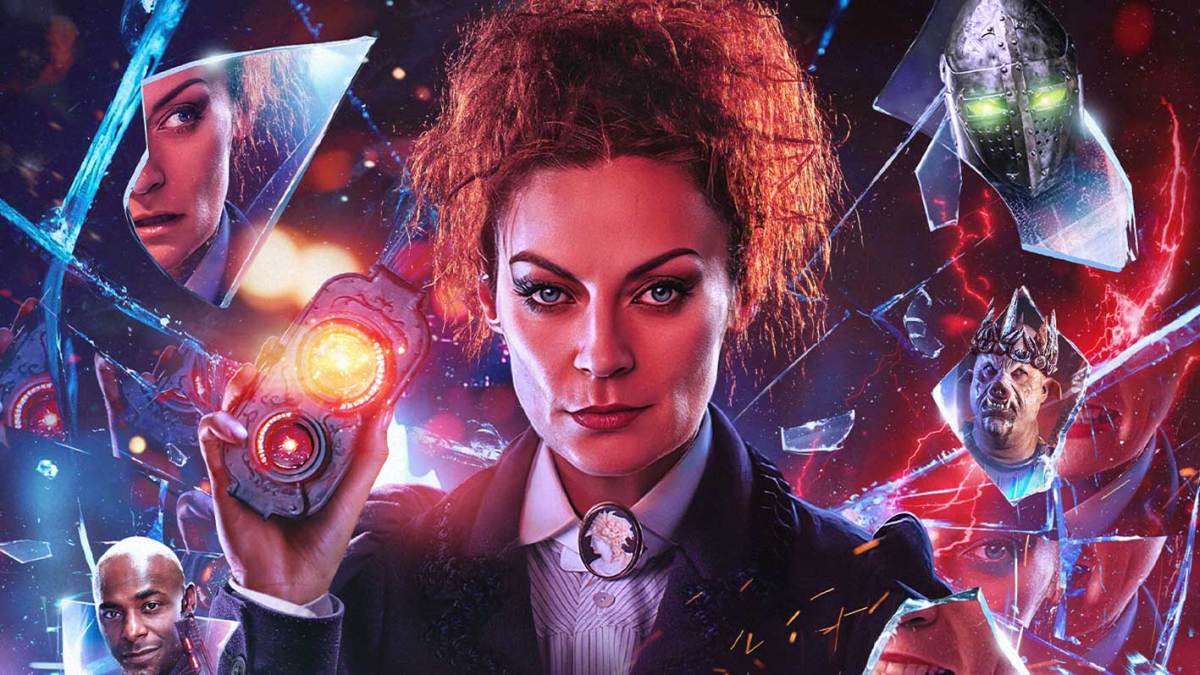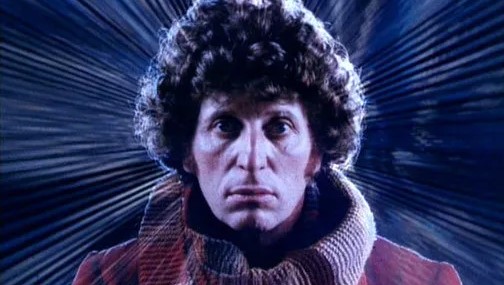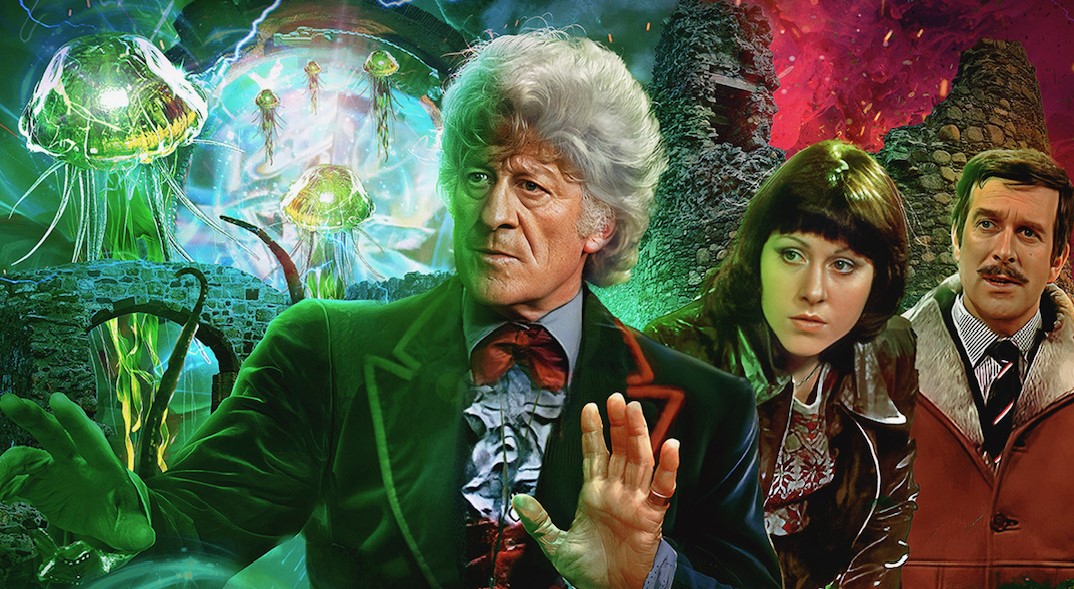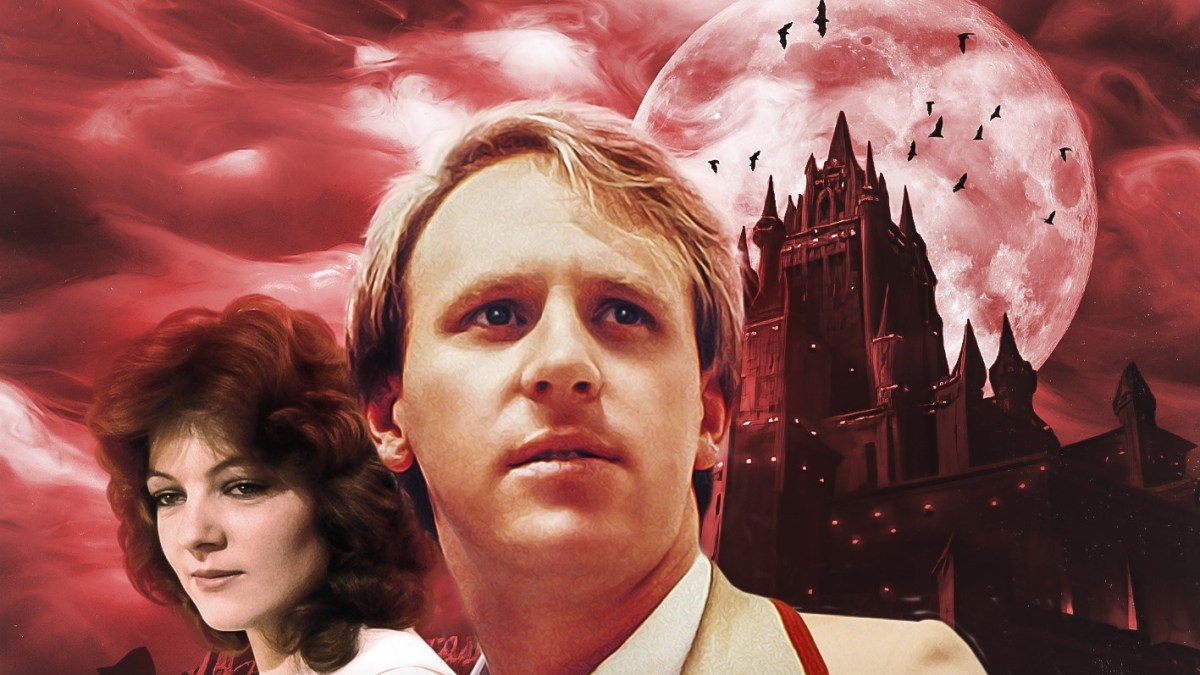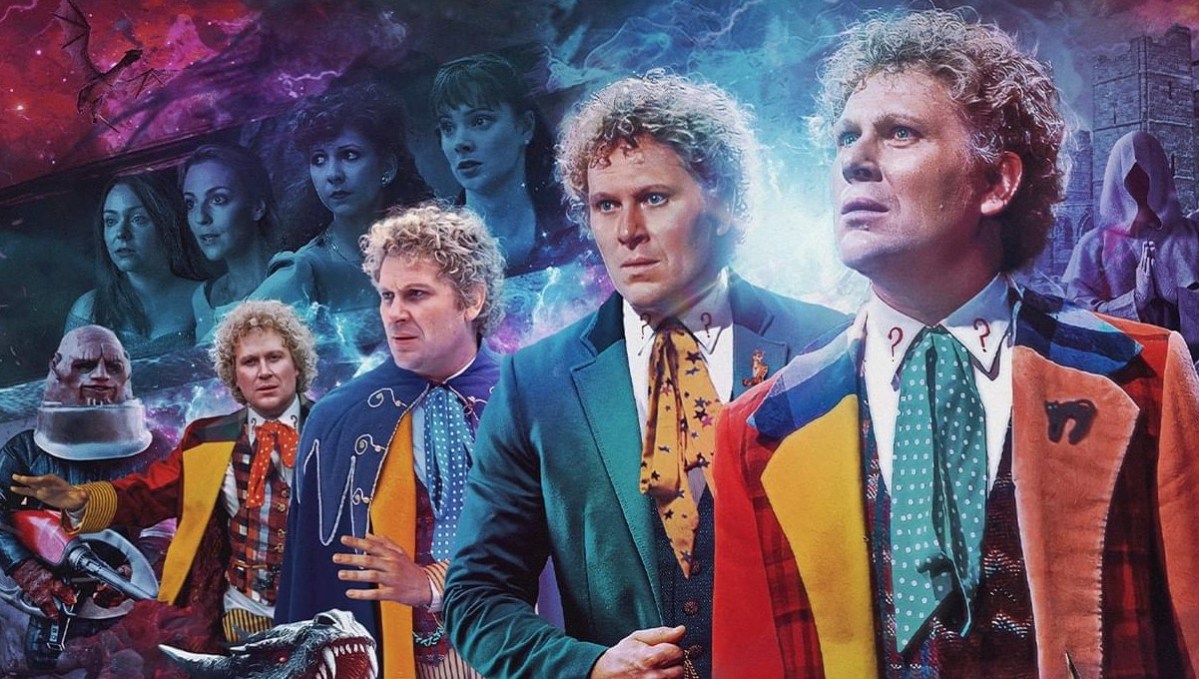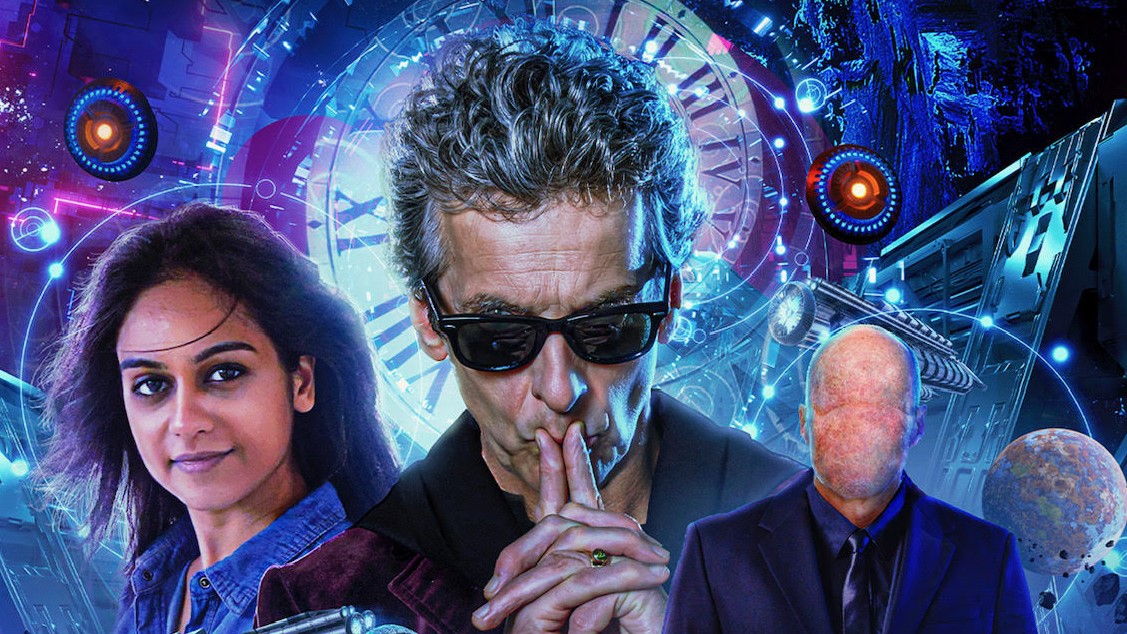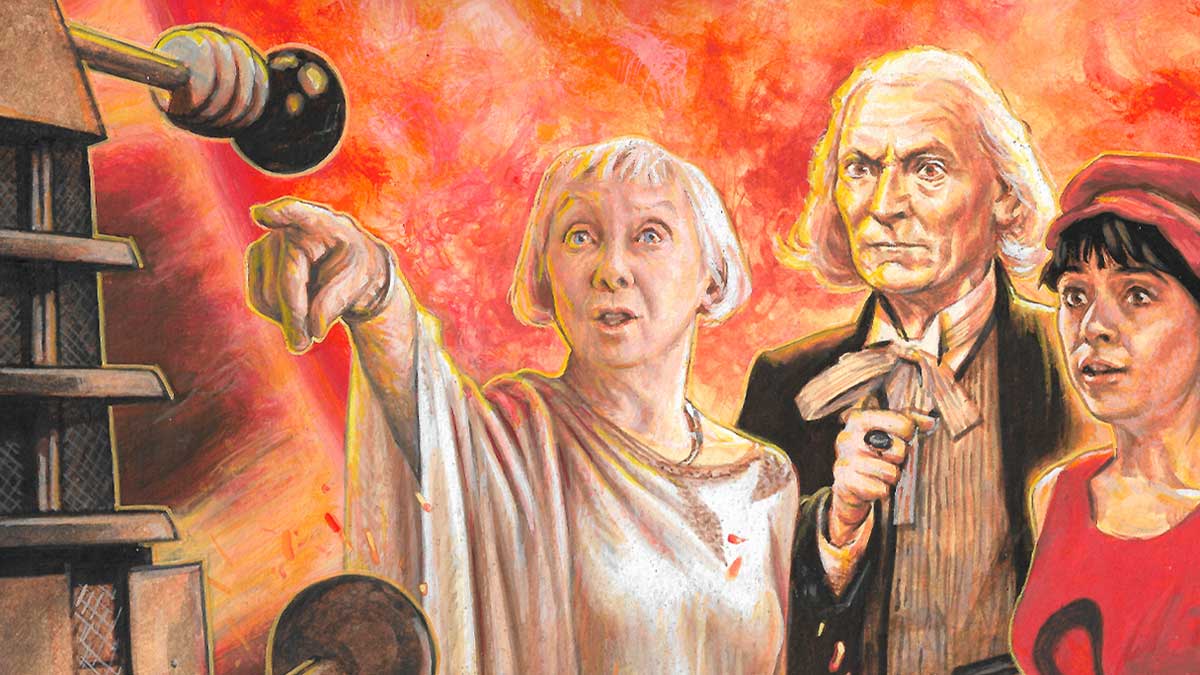Doctor Who in the 1980s was a time of great change. It’s when the classic, ethereal theme tune got its first major rockin’ upgrade since it was developed in 1963, and it was the end of stunning seven-year run for Tom Baker as the Fourth Doctor. (“But the moment had been prepared for…”) Peter Davison stepped into the role in 1981-82, bringing a youthful vigor that would see the show through to its 20th anniversary and beyond.
While it’s the beginning of a darker era, it’s also one where vast concepts are explored and sweeping, imaginary worlds are created, bringing an even more serialized feel to entire seasons of Doctor Who programming beyond just the self-contained, four-part episodic structure of most stories.
This is a renaissance in more ways than one. Beyond a changing of the guard, the years when John Nathan-Turner was producer of the venerable program showed a greater respect for out-there sci-fi world-building that, in many ways, hasn’t been eclipsed since, either in the remainder of the ’63-’89 original run or the revival that began in 2005 and continues this fall with the coming of the Thirteenth Doctor, and the first woman to play the role.
This high-concept brand of Doctor Who world-building really hit overdrive in the run-up to the sci-fi series’ 20th anniversary.
Big hair – and bigger ideas
Far more than New Romantic, glam rock fashion, this was an era of high strangeness in Doctor Who. As the Fourth Doctor is wrapping up his affairs, seeking a long-overdue revamp of his persnickety TARDIS in “Logopolis,” he drags the audience through pre-Information Age concepts like non-volatile computer bubble memory. But that isn’t enough; they must be introduced to block transfer computation — mathematics that can literally change the physical world. On the planet Logopolis, this is the key to rebooting an obsolete TARDIS’ faulty chameleon circuit — but, secretly, it’s also the key to dragging our universe past its point of total structural collapse. And collapse it does begin to do, after another renegade Time Lord, the evil Master, meddles in the delicate labors of the Logopolitans.
“Logopolis” is the culmination of a story arc structured around the concept of entropy that began in Season 18’s earlier “E-Space Trilogy” — “Full Circle,” “State of Decay” and “Warrior’s Gate” — and carried through the rest of the season’s “Keeper of Traken” and “Logopolis,” and streched a bit into the following season’s “Castrovalva.”
E-Space is a small universe — literally — and, like the rest of the stories in the season, it shows macro-world-building on fa micro-scale. If you extend to the previous stories at the beginning of the season, “The Leisure Hive” and “Meglos,” you can see the beginning of this exploration evolving.
But it’s “Logopolis” that illustrates the concept most starkly: A TARDIS falling apart; the Master possessing another’s body after decaying at the end of his 13 natural Time Lord lives; the entire Metulla Orionsis star system and its idyllic Traken Union, wiped out as the end of Logopolis’ interventions begin closing the gateways between the known universe (N-Space) and E-Space.
In “Castrovalva,” the first full episode starring Davison, the Doctor’s companions are led to a world called of the same name (inspired by the trippy M.C. Escher lithograph of, also, the same name). Here, they expect to find a place where the Time Lord’s regeneration can unfold in peace after the violence on Logopolis and Earth’s Pharos Project facility. Of course, it’s really another trap laid by the Master, but here the ultimate destruction — a reduced TARDIS’ escape from the Big Bang, aka Event One — gives way to an exploration of recursion, or procedures folding in upon themselves. Castrovalva doesn’t actually exist, but it’s yet another example — possibly the most poignant — of a remote society at its end.
In all the Twittering back and forth amid Doctor Who on Twitch, a misstep of mine drew the engagement of writer Mags L Halliday, author of several Doctor Who-related novels, novellas and short stories. Her description of the story arc in question really struck me:
“‘cut off societies’ facing destruction as part of their life cycle! Lots of decay, stagnation and loops. Just like the run in to Tennant and Capaldi regenerations.”
Snakes and anti-matters
The Doctor Who universe of this era doesn’t consist entirely of crumbling hermit kingdoms, of course. Some of its best world-building takes place amid vast, galactic civilizations playing out in intimate settings more fitting of the series’ budget.
The Fifth Doctor era gave us the Mara, an ancient demon that possesses the Doctor’s companion Tegan Jovanka. She first becomes ensnared in the early Davison tale “Kinda” on the outwardly primitive world and colony candidate Deva Loka, but this Big Bad is revisited in “Snakedance,” where a still-possessed Tegan steers the TARDIS and we learn the mighty Federation was established after its founder defeated the Mara and its own ancient Sumaran Empire. But the Mara came from the human inhabitants’ own hubris in harnessing powerful mind crystals. On Manussa, the Mara ensnares the heir to the Federation before being defeated by the Doctor’s mental discipline.
Also the name of a seductive Buddhist demon and all-around enemy of enlightenment, the Mara was a big concept rife for even further exploration and world-building, as audio drama house Big Finish Productions and several Doctor Who novelists saw and mined for material. (Even the 21st century Who spinoff Torchwood would make reference to the Mara.)
With a name like “Arc of Infinity,” it’s hard to sound any grander. This region of Doctor Who space also known as Rondel is the stage for a return to the Doctor’s homeworld, Gallifrey, by the mad erstwhile hero Omega, forgotten and trapped in an anti-matter universe, who tries for the second time in Doctor Who to return to life here. Not something we really see in the show, the Arc of Infinity refers to a curve between dimensions allowing the anti-matter Omega to be shielded during his return, giving him time to try to bond with a body he can use in our universe — the Doctor, of course. This bit of Doctor Who world-building adds to the Time Lord mythos, which has become extensive in both eras of the series to the point the world was retconned out of existence and then retconned back for the program’s 50th anniversary.
Event One, part deux
Back in “Castrovalva,” the Master tried to trap the Doctor’s TARDIS in the holocaust of the Big Bang, aka Event One. But in “Terminus,” the middle tale of the “Black Guardian Trilogy,” (following “Mawdryn Undead,” in which a race of renegades try to use stolen Time Lord technology to extend their lives), the TARDIS visits a spaceship teeming with lepers that takes them to a station in the center of the known universe: Terminus. It’s really another ship, one that accidentally traveled backward in time and ejected its fuel during an emergency, sparking the Big Bang. (Event One explained.)
Against this bleak backdrop shines a beacon of hope, as Nyssa of Traken — no longer the scared sole survivor of her world, but a confident and brave scientist — leaves the TARDIS crew to stay behind and help the needy. So the Fifth Doctor era loops back to its explosive beginning before it can surge forward …
“Winner takes all”
“Enlightenment” is the final story of the “Black Guardian Trilogy,” which introduced the scheming companion Vislor Turlough as a pawn of the titular Guardian under orders to kill the Doctor in revenge for denying him the all-powerful Key to Time years earlier — another attempt at grand-arc storytelling, but one that was more fragmented. (Pun intended.)
In “Enlightenment,” we meet the Eternals — beings who seek the ultimate prize, actual enlightenment itself, while using mortal “Ephemerals” for entertainment and fodder as they compete in a regatta among the stars.
The spirit of competition extends into the 20th anniversary special, “The Five Doctors,” as most of the Doctor’s previous incarnations are reunited in Gallifrey’s primeval Death Zone as part of an ambitious Time Lord’s ploy for his own prize: true eternal life. “The Game of Rassilon” here, long forbidden, pits some of the universe’s most dangerous creatures against one another, all to challenge the Doctor to snag the prize for a shadowy schemer. Not only did “The Five Doctors” celebrate many of the show’s bygone friends and foes — the Brigadier, Time Lords, Daleks, Cybermen — but they would return at many points throughout the surrounding seasons in the time of the Fifth Doctor, another example of reflection amid progress.
Man’s end
“Frontios” brings the TARDIS to a far-future colony of desperate humans escaping the Earth’s ruination, at a delicate time in its development when the Doctor is hesitant to disturb or even to be seen to interfere. We see the TARDIS nearly destroyed and pulled back together by the gravity-controlling Tractators, forgotten universal boogeymen who want to turn planets into engines of conquest. The new series’ “Utopia” visits a similar enclave at the end of time, where another version of the Master awaits in exile and anonymity, even from himself …
In “Resurrection of the Daleks,” human forces finally have Davros, the unhinged creator of the evil Daleks, under lock and key; it’s a snapshot of an epic history the show returns to again and again in all its forms, as the show’s most iconic villains rise from humble beginnings as mutated misfits to masters of Earth and most of the known universe, to challenge the Time Lords themselves in a war that devastates creation and shaped the narrative of 21st century Doctor Who.
Of course there are other feats of world-building throughout Doctor Who’s long history; the era described here just represents an extraordinarily rich tableau of creations that make it so easy to get lost with the Doctor. You don’t really find such grand arcs or meta-serials before it; the lost “Galaxy 4” and epic “The Daleks’ Master Plan” in the First Doctor era, and the stranding of the Third Doctor on Earth as scientific adviser to U.N.I.T., stand as some of the few exceptions. The aforementioned “Key to Time” uses a McGuffin meta-plot, but ultimately strings together several unrelated (if most interesting) tales.
The Seventh Doctor would put his companion Ace through trial after trial while playing a dangerous ongoing chess match (literally) against the evil Fenric across the late-’80s seasons 25 and 26, the show’s last.
But it’s not until you get into the 21st century iteration of the program that you find a more consistent use of story arcs, and the very phenomenon of spinoffs (attempted in the 1980s with K9 and Company, which turned out to be a one-off) that would take off in this century is, itself, an illustration of how much Doctor Who world-building was going on — or trying to, despite the confines of tradition.
Doctor Who world-building is more than just creating interesting and fantastical characters, locations and conflicts that stick in one’s mind years after the credits roll. It can also be exploring the higher concepts of science and reality itself in all its twisted possibilities.
Speaking of twisted possibilities, the Sixth Doctor (Colin Baker) era begins airing Monday on Twitch Presents. “The Trial of a Time Lord,” Colin Baker’s final season, sees its own brand of meta-structure — but that’s another story…
Character artwork from doctorwho.tv/explore









